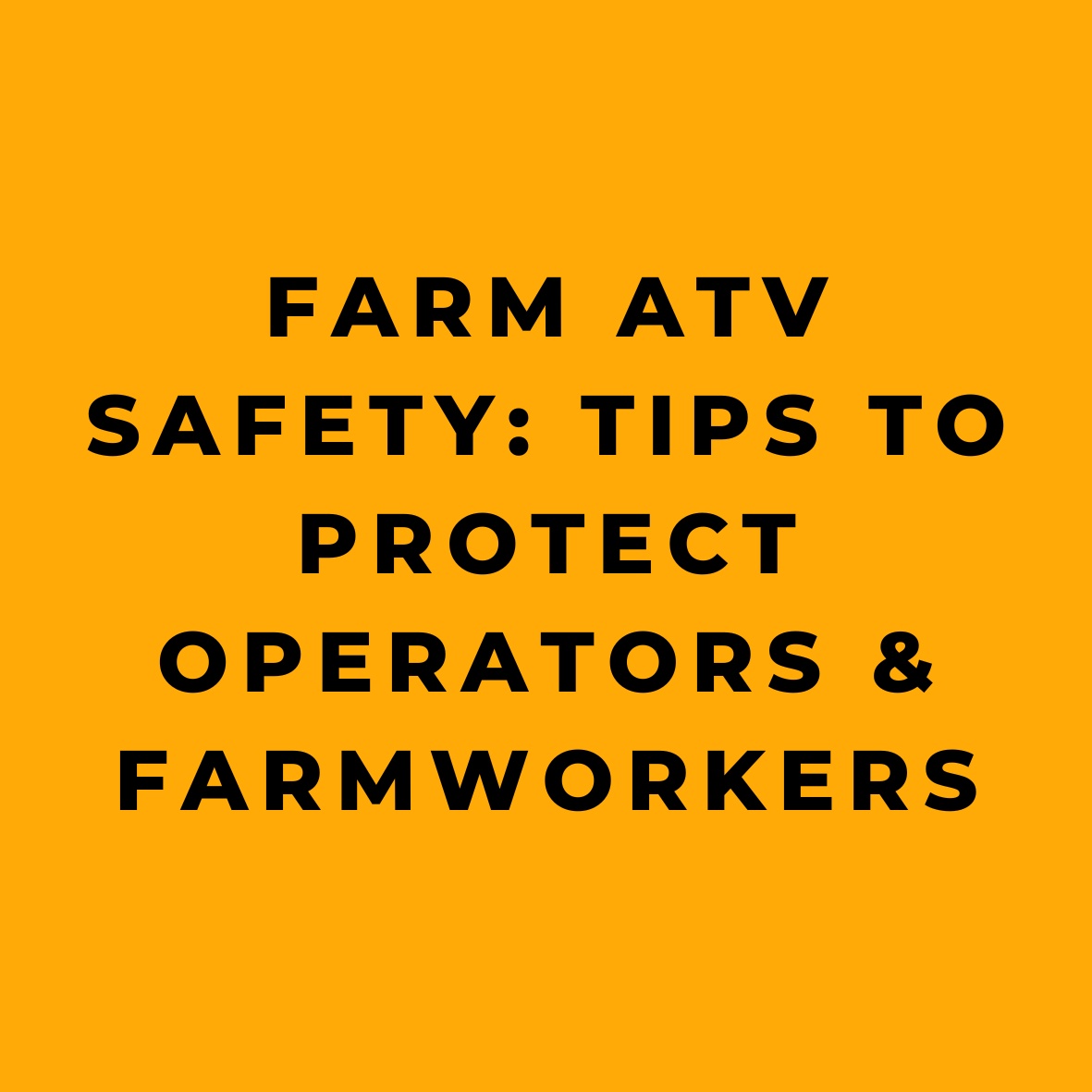We’re talking about agricultural safety today, and I want to focus on the hazards of using all-terrain vehicles (ATVs) on farms. ATVs are super useful for herding livestock, hauling small loads, and even carrying pesticide applicators. But, as handy as they are, they can also be dangerous. So, let’s talk about what employers and supervisors can do to keep ATV operators safe.
ATVs can be risky business. Between 2003 and 2011, NIOSH reported 2,090 ATV-related injuries and 321 fatalities, with three out of five of those deaths happening in agriculture. Most of these incidents are caused by:
- Loss of vehicle control
- Rollovers
- Being thrown from the vehicle
- Collisions with trees or other obstacles
- Lack of protective gear
- Inexperienced operators
To reduce these risks, employers should provide ATVs with motorcycle-type handlebars, large low-pressure tires, a single worker design, and a straddlable seat.
Now, let’s dive into some essential safety topics.
ATV Safety Checks
Employers need to train operators to perform pre- and post-ride safety checks. These should cover:
- Tires and wheels
- Controls and cables
- Lights and electrical systems
- Oil and fuel
- Chain and/or driveshaft
Training
Proper training is key for safe ATV operation. Employers should:
- Provide ATV owner’s manual training for each operator
- Never allow untrained workers to drive an ATV
- Prevent workers from operating an ATV when tired or impaired
- Ensure guards are in place to avoid accidental contact with hot or moving parts
Operators should be trained to:
- Start the vehicle with the gear in neutral or park and the parking brake locked
- Avoid excessive speeds
- Adjust speed for terrain, visibility, and experience
- Stay alert for terrain hazards (holes, stumps, ruts, culverts, wires, fences, rocks)
- Follow the owner’s manual and avoid risky stunts
- Be cautious when approaching hills, turns, and obstacles
Personal Protective Equipment (PPE)
PPE is crucial for ATV operators. Employers should:
- Provide head, face protection, and protective clothing
- Ensure operators always wear proper gear
Operators should be trained to:
- Secure loose bootlaces to avoid entanglement
- Avoid wearing loose clothing that could get caught
- Wear appropriate helmets, gloves, non-skid shoes, goggles or face shields, long pants, and long sleeves
Load and Weight Considerations
It’s essential to know your ATV’s load and weight limitations. Employers should train operators to:
- Check tire inflation
- Avoid multiple riders (unless the ATV is designed for it)
- Use appropriate and approved attachments and equipment
- Balance the ATV to avoid pulling to one side
- Secure tools on the cargo rack
- Understand trailer loading and pulling procedures
Crossing Roads and Highways
Crossing roads and highways can be dangerous. Employers should train operators to:
- Stop on the shoulder before crossing and have the leader check for traffic
- Yield the right of way and look both ways
- Cross roads at a 90-degree angle where visibility is good
- Ride cautiously on roadways as ATVs handle differently on pavement
Working Alone
Working Alone on Farms: Employers should establish check-in procedures for workers operating alone. This helps ensure their safety and keeps communication lines open. Make sure you’re aware of the following details:
- Worker’s destination
- Estimated time of departure and return
- Contact information
- Mode of communication (cell phone, hand-held radio, etc.)
- Alternate plans in case of bad weather, traffic problems, etc.
Workers’ Rights: It’s important to remember that workers have the right to:
- Safe working conditions without the risk of serious harm
- Receive information and training in a language they understand about workplace hazards, prevention methods, and applicable OSHA standards
- Review records of work-related injuries and illnesses
- File a confidential complaint with OSHA to inspect their workplace if they believe there’s a serious hazard or their employer isn’t following OSHA rules; OSHA will maintain confidentiality
Workers also have the right to exercise their rights under the law without retaliation, including reporting injuries or raising health and safety concerns with their employer or OSHA. If a worker experiences retaliation, they must file a complaint with OSHA as soon as possible, but no later than 30 days. For more information, visit OSHA’s Workers page.
In conclusion, agricultural safety is of utmost importance, and ensuring the well-being of ATV operators on farms is a key aspect of maintaining a safe work environment. Employers and supervisors play a vital role in providing proper training, equipment, and guidelines for their workers. By following the recommendations outlined in this article, including pre- and post-ride safety checks, proper training, personal protective equipment, load and weight considerations, crossing roads and highways safely, and having check-in procedures for those working alone, we can create a safer workplace for all.
For more information on farmworker safety, including ATV safety and other agricultural operations, visit OSHA’s Safety and Health Topics Agricultural Operations website at https://www.osha.gov/agricultural-operations. Stay safe out there, folks!
References:










